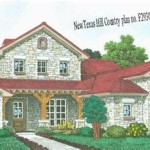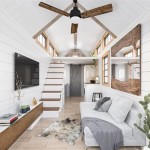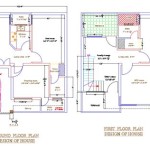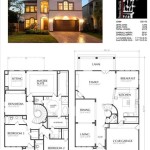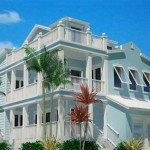Large Hunting Lodge Floor Plans: Considerations and Design Elements
The design and implementation of a large hunting lodge floor plan requires careful consideration of several factors. The lodge is not simply a residence, but a functional space that caters to the specific needs of hunting parties, often accommodating multiple individuals with their equipment and associated activities. Factors such as the number of occupants, the type of game pursued, the length of stay, and the desired level of comfort all significantly influence the final floor plan. Optimization of space for gear storage, game processing, relaxation, and camaraderie is crucial in creating a successful hunting lodge.
Understanding the operational requirements of a hunting lodge is paramount before even considering architectural styles or aesthetic preferences. This operational understanding should encompass aspects such as vehicular access for transport of game, waste disposal considerations for processing large animals, and the integration of outdoor spaces for activities like cleaning equipment or simply enjoying the surrounding environment. Neglecting these functional aspects can lead to significant inconveniences and inefficiencies down the line, impacting the overall experience of the lodge.
Key Point 1: Spatial Allocation and Room Functionality
Efficient spatial allocation is paramount in a large hunting lodge. The floor plan should prioritize dedicated zones for specific activities, minimizing overlap and ensuring smooth workflow. This involves carefully considering the size and placement of rooms such as the mudroom, gear storage, game processing area, kitchen, dining room, living areas, bedrooms, and bathrooms. Each space should be designed with its intended purpose in mind, optimizing functionality and minimizing wasted space.
The mudroom, acting as a crucial transition zone, should be strategically located near the main entrance to prevent the tracking of dirt and debris into the living areas. Adequate space for removing and storing outerwear, boots, and other hunting gear is essential. Durable, easy-to-clean flooring is a necessity in this high-traffic area. Benches, hooks, and shelving should be integrated into the design to maximize storage and organization.
Gear storage is another critical consideration. Depending on the type of hunting undertaken, this area may need to accommodate rifles, shotguns, bows, ammunition, fishing rods, waders, and other specialized equipment. Secure storage solutions, such as gun safes or locked cabinets, are essential for safety and security. Proper ventilation and humidity control are also important to prevent damage to valuable equipment. The size of the storage area should be tailored to the number of hunters and the volume of gear typically brought on hunting trips.
The game processing area, if included within the lodge, demands careful planning to ensure hygiene and compliance with local regulations. This space should be equipped with durable, non-porous surfaces that are easy to clean and disinfect. Dedicated sinks for washing hands and equipment, as well as ample counter space for processing game, are essential. Proper ventilation and refrigeration are also necessary for preserving meat. Ideally, the game processing area should be separated from the kitchen and dining areas to prevent cross-contamination.
The kitchen and dining areas should be designed to accommodate the needs of a large group. Commercial-grade appliances, ample counter space, and plenty of storage are essential for preparing and serving meals. The dining area should be spacious enough to comfortably seat all members of the hunting party. Consideration should be given to the layout of the kitchen to optimize workflow and minimize congestion. A large island or peninsula can provide additional counter space and seating.
Living areas should provide comfortable spaces for relaxation and socializing. Fireplaces, comfortable seating, and entertainment systems can create a welcoming and inviting atmosphere. The size and layout of the living areas should be proportionate to the overall size of the lodge and the number of occupants. Windows offering views of the surrounding landscape can enhance the enjoyment of the space.
Bedrooms should provide comfortable and private spaces for rest and relaxation. The number of bedrooms and the number of beds per bedroom should be determined by the typical size of the hunting party. Bunk beds can be an efficient way to maximize sleeping space in smaller rooms. Each bedroom should have adequate storage for clothing and personal belongings. Bathrooms should be conveniently located and should include showers, toilets, and sinks. Multiple bathrooms may be necessary to accommodate a large group.
Key Point 2: Material Selection and Durability
The selection of building materials for a large hunting lodge should prioritize durability, ease of maintenance, and resistance to the elements. Given the often-remote locations and potential for heavy use, materials should be chosen that can withstand harsh weather conditions and frequent wear and tear. Natural materials, such as wood and stone, are often favored for their aesthetic appeal and durability, but synthetic materials can also be used to enhance performance and reduce maintenance requirements.
Exterior materials should be chosen to protect the lodge from the elements, including rain, snow, wind, and sun. Roofing materials should be durable and weather-resistant, such as asphalt shingles, metal roofing, or tile roofing. Siding materials should be chosen to resist rot, insect infestation, and weathering. Common siding options include wood siding, vinyl siding, fiber cement siding, and stone veneer. The choice of exterior materials should also consider the architectural style of the lodge and the surrounding landscape.
Interior materials should be chosen for their durability, ease of maintenance, and aesthetic appeal. Flooring materials should be resistant to wear and tear and easy to clean. Common flooring options include hardwood flooring, tile flooring, laminate flooring, and vinyl flooring. Walls should be finished with durable paint or wall coverings that can withstand frequent cleaning. Ceilings should be finished with materials that are resistant to moisture and mold. In areas prone to moisture, such as bathrooms and mudrooms, waterproof materials should be used.
The selection of fixtures and appliances should also prioritize durability and performance. Commercial-grade appliances are often preferred for their ability to withstand heavy use. Plumbing fixtures should be chosen for their reliability and water efficiency. Lighting fixtures should be energy-efficient and provide adequate illumination. Durable hardware, such as door handles, hinges, and locks, should be used throughout the lodge.
Consideration should be given to the maintenance requirements of the selected materials. Some materials, such as wood, may require regular maintenance, such as painting or staining, to protect them from the elements. Other materials, such as vinyl, may require minimal maintenance. The choice of materials should be balanced against the desired aesthetic appeal and the owner's willingness to perform maintenance.
Key Point 3: Integration of Outdoor Spaces
The integration of outdoor spaces is an important element in the design of a large hunting lodge. Outdoor areas can provide additional space for relaxation, recreation, and game processing. Properly designed outdoor spaces can enhance the overall enjoyment of the lodge and extend its functionality. Elements such as porches, decks, patios, fire pits, and outdoor kitchens can be incorporated into the design to create inviting and functional outdoor areas.
Porches and decks provide covered outdoor spaces for relaxation and socializing. They can be designed to offer views of the surrounding landscape and provide protection from the elements. Porches are typically covered and enclosed, while decks are typically open and exposed. The size and layout of the porch or deck should be proportionate to the size of the lodge and the number of occupants. Durable decking materials, such as wood or composite decking, should be used.
Patios provide paved outdoor spaces for dining and entertaining. They can be constructed from concrete, brick, stone, or pavers. Patios can be designed to accommodate outdoor furniture, grills, and fire pits. The size and layout of the patio should be proportionate to the size of the lodge and the number of occupants. Proper drainage should be provided to prevent water from accumulating on the patio surface.
Fire pits provide a focal point for outdoor gatherings and can extend the use of outdoor spaces into the cooler months. Fire pits can be constructed from stone, brick, or metal. They should be located in a safe and open area, away from flammable materials. Seating should be provided around the fire pit for comfortable socializing.
Outdoor kitchens provide a convenient space for preparing meals outdoors. They can be equipped with grills, smokers, refrigerators, and sinks. Outdoor kitchens should be located near the dining area and should be designed to withstand the elements. Durable materials, such as stainless steel and stone, should be used in the construction of outdoor kitchens.
Additionally, integrating features like game cleaning stations outside, strategically placed near the game processing area, can improve workflow and hygiene. These stations should include running water, ample lighting, and durable surfaces that are easy to clean. Consideration should also be given to appropriate waste disposal methods to minimize odor and prevent attracting pests.
Ultimately, a well-designed large hunting lodge floor plan should reflect a holistic approach, balancing the needs of functionality, durability, and comfort. The integration of thoughtfully planned outdoor spaces further enhances the overall experience and value of the lodge, making it a truly exceptional retreat for hunting enthusiasts.

Camp Retreat Lodge 10 Beds 3 Baths 3212 Sq Ft 153 1007

Floor Plans Lodge Hotel Plan

Log Cabin Dovetail Hunting Small Kit

Browse Floor Plans For Our Custom Log Cabin Homes House Home

Log Home Floor Plans Engineering Custom Blueprints

Fishing Cabin Floor Plans Powerful Visual Appeal

Small Hunting Cabin Kits Cowboy Log Homes Floor Plans

Fishing Cabin Plans Sliding Walls And Soaring Ceilings

Hunting Lodge Namibia

Small Cabin House Plans Floor Construction


